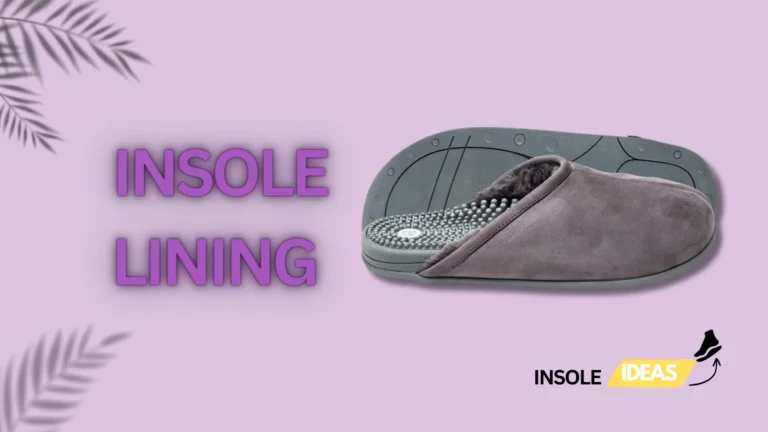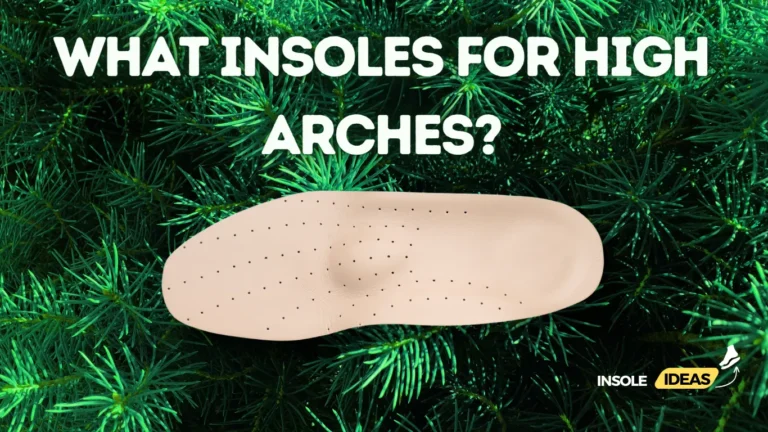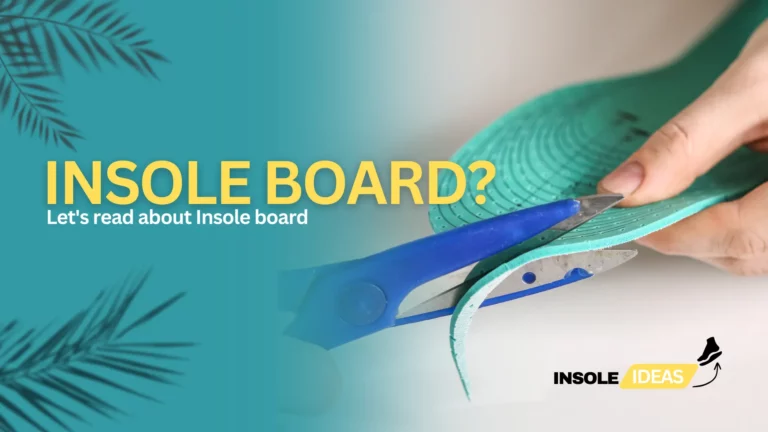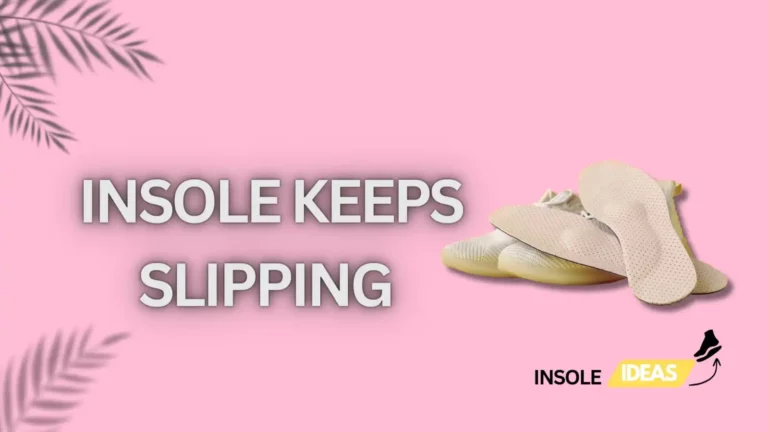How to fix insole of shoe?
Comprehensive Guide on Fixing Insoles of Shoes
Importance of Comfortable Footwear
Comfortable footwear is essential for maintaining overall foot health and ensuring a pleasant walking experience. Many individuals underestimate the significance of well-cushioned insoles in providing the necessary support and comfort for daily activities. When insoles are in good condition, they help distribute body weight evenly, reduce pressure points, and absorb shock during movement. Neglecting the comfort aspect can lead to various foot problems, affecting not only the feet but also causing discomfort in other parts of the body.
Common Issues with Insoles
Even though insoles are very important, their usefulness may be compromised by wear and tear. Common issues include flattened arch support, heel discomfort, and general deterioration over time.
Understanding Insole Problems
Wear and Tear
Signs of Damage
Recognizing signs of wear and tear on insoles is imperative for proactive maintenance. Look for visible cracks, thinning areas, or flattened regions, as these indicate a loss of support. Additionally, pay attention to any unusual odors, as this may signal bacterial growth within the insole material.
Causes of Wear
The wear and tear of insoles is caused by a number of reasons. Excessive friction from repetitive movements, poor shoe quality, and prolonged usage without proper care are common culprits. Understanding these causes enables individuals to take preventive measures and address issues promptly.
Structural Issues
Flat Insoles
Flat insoles lack the necessary arch support, which can lead to discomfort and foot fatigue. It’s crucial to identify and rectify this problem early on to prevent more severe issues like fallen arches or misalignment of the lower limbs.
Arch Problems
Issues with the arch support in insoles can result in conditions such as plantar fasciitis or overpronation. Identifying the specific arch problem allows for targeted solutions, such as using orthotic inserts designed to address different arch types.
Heel Support
Inadequate heel support can lead to pain and discomfort in the heel area, affecting overall mobility. Examining the structure of the insole and addressing any deficiencies in heel support is vital for preventing conditions like heel spurs or Achilles tendonitis.
- Assessing the Right Insole Material
Choosing the appropriate insole material is crucial for ensuring comfort, support, and overall foot health. There are several solutions available on the market, each with special characteristics and advantages.
- Types of Insole Materials
- Foam
Foam insoles are a popular choice due to their lightweight and
cushioning properties. They provide excellent shock absorption, reducing the impact on joints during daily activities. The softness of foam insoles makes them comfortable for extended wear, making them ideal for individuals with foot fatigue or discomfort.
- Gel
Gel insoles are designed to distribute pressure evenly across the foot, offering enhanced support and alleviating pain in sensitive areas. The gel material adapts to the shape of the foot, providing a customized and adaptive fit. This makes gel insoles suitable for individuals with conditions like plantar fasciitis or heel spurs.
- Leather
Leather insoles combine durability with breathability. They offer natural moisture-wicking properties, keeping the feet dry and preventing the development of odors. Leather insoles conform to the foot’s shape over time, providing a personalized fit and maintaining resilience for extended use.
- Orthopedic Options
Orthopedic insoles are specifically designed to address various foot conditions and provide targeted support. They may incorporate advanced materials like memory foam or specialized arch support structures. These insoles aim to promote proper alignment, reduce pain, and improve overall foot function, making them beneficial for individuals with specific foot ailments.
- Tools and Materials
Ensuring you have the right tools and materials is essential for a successful insole replacement. Proper preparation and understanding your options will contribute to a more comfortable and effective outcome.
- Essential Tools
The basic tools for insole replacement include a pair of scissors for trimming, a marker for outlining the desired shape, and a ruler for precise measurements. Additionally, having access to adhesive materials, such as double-sided tape or glue, is crucial for securing the insoles in the chosen footwear.
- Choosing the Right Replacement Insoles
- Custom vs. Generic Options
Custom insoles are tailored to the individual’s foot shape and arch profile, providing optimal support. While more expensive, they offer a personalized solution for those with specific foot conditions. Generic options, on the other hand, provide a more affordable alternative and may suit individuals with standard foot shapes.
- Proper Sizing
Proper sizing is fundamental for insole effectiveness. Ill-fitting insoles can lead to discomfort and may exacerbate existing foot problems. Understanding the dimensions of your footwear and selecting insoles that match your shoe size ensures a snug fit, maximizing support and comfort.
V. DIY Insole Fixes
When your insoles show signs of wear and tear, it’s not always necessary to replace them immediately. Several do-it-yourself (DIY) fixes can help extend the life of your insoles and maintain their functionality.
A. Patching Small Tears
Small tears in your insoles can compromise their support and comfort. To address this issue, use a patching technique. Cut a piece of durable fabric or adhesive-backed material to cover the tear, ensuring it adheres securely. This DIY fix reinforces the affected area, preventing further damage and maintaining the insole’s integrity.
B. Adding Cushioning
If your insoles have lost their original cushioning, consider adding extra padding. You can use materials like foam inserts or gel pads to enhance the comfort and shock absorption of your insoles. This DIY solution is particularly beneficial for individuals who spend long hours on their feet or those looking to customize the level of cushioning in their shoes.
C. Fixing Arch Support
When the arch support in your insoles starts to wear down, it can lead to discomfort and poor foot alignment. To remedy this, consider using arch support inserts or orthopedic insoles. These can be placed on top of your existing insoles to restore proper arch support, providing relief for conditions such as flat feet or fallen arches.
D. Reinforcing Heel Area
The heel area of insoles often experiences significant pressure, leading to wear over time. Reinforce this area by applying a sturdy adhesive-backed material or a heel cup. This DIY fix adds extra support to the heel, preventing it from collapsing and maintaining the insole’s overall structural integrity.
VI. Gluing and Adhesive Solutions
Selecting the appropriate glue is essential for long-lasting and efficient insole repairs. Understanding the types of adhesives available and proper application techniques ensures a successful repair process.
A. Types of Adhesives
1. Shoe Glue
Shoe glue is a specialized adhesive formulated for bonding various shoe materials, including insoles. It offers a flexible and robust connection, which makes it perfect for fixing tiny splits or separated insole parts. Ensure the shoe glue is compatible with the insole material for the best results.
2. Super Glue
Super glue, or cyanoacrylate adhesive, is a quick-bonding and versatile option for insole repairs. It works well on a variety of materials but may not be suitable for flexible insoles. Use super glue cautiously, as excessive application can result in stiffness, affecting the insole’s comfort.
B. Proper Application Techniques
Regardless of the adhesive chosen, proper application is essential. Clean the surfaces thoroughly before applying the adhesive. Follow the product’s instructions for curing time and pressure, ensuring a secure bond. Applying the adhesive evenly and allowing sufficient drying time contributes to a successful insole repair.
Top of Form
- Stitching Techniques
Stitching is a traditional yet effective method for repairing insoles, offering a reliable solution for small tears and reinforcing weakened areas.
- Sewing Small Tears
When faced with small tears in your insoles, a needle and thread can be your go-to tools for a quick fix. Use a strong and durable thread, and carefully sew up the tear, ensuring the edges align seamlessly. This stitching technique prevents the tear from expanding and helps maintain the insole’s structural integrity. If you want to safeguard your fingertips when sewing, think about wearing a thimble.
- Reinforcing Insole Edges
Insole edges often face significant stress, leading to fraying or separation from the shoe. Reinforce these edges by sewing along the perimeter of the insole. This stitching provides added strength to the edges, preventing further wear and tear. Choose a thread color that matches the insole material for a discreet and functional repair.
- Reshaping Insoles
Reshaping insoles is essential for maintaining their effectiveness over time. Various techniques can help restore their original form and function.
- Heat Molding Techniques
Some insoles, especially those made from memory foam or heat-moldable materials, can be reshaped using heat. Follow the manufacturer’s guidelines for heating the insoles, and then mold them to your foot shape while they are still warm. This technique helps enhance the insoles’ contour to better support your feet and provide a personalized fit.
- Using Inserts for Structural Support
To address issues with structural support, consider using inserts that are specifically designed to reinforce insoles. These inserts are available in various materials, such as plastic or foam, and can be placed beneath the existing insoles to provide additional support to the arch or heel areas. People who suffer from problems like under- or overpronation will find this treatment especially helpful.
- Prevention Strategies
Preventing insole damage is key to extending their lifespan and maintaining foot comfort. Implementing proactive measures can help avoid common issues.
- Regular Maintenance
Regularly inspect your insoles for signs of wear and tear. Stitching or repairing tiny faults as soon as possible helps save them from growing into bigger concerns. Cleaning your insoles and allowing them to air dry also contributes to their longevity.
- Rotating Shoes
Daily use of the same shoes might hasten the wear of the insoles. To disperse the pressure and lessen the strain on the insoles, switch between several pairs of shoes. This simple practice helps maintain the shape and support of the insoles, extending their overall durability.
- Using Insole Protectors
Insole protectors, such as adhesive films or insole cushions, can shield the insoles from friction and moisture. These preventative measures create a barrier between the insole and the foot, reducing the likelihood of damage and enhancing overall hygiene. Choose protectors that are compatible with your insole material for optimal effectiveness.
- Common Mistakes to Avoid
Ensuring the longevity and effectiveness of your insoles involves steering clear of common pitfalls that could compromise their performance.
- Using Incorrect Adhesives
One of the most prevalent mistakes is using the wrong adhesives for insole repairs. Different materials require specific adhesives for optimal bonding. Using an adhesive that isn’t compatible with the insole material can result in poor adhesion, leading to a short-lived repair. Always check the manufacturer’s recommendations and choose adhesives designed for insole applications.
- Ignoring Early Signs of Damage
Ignoring early signs of insole damage is a mistake that can escalate minor issues into major problems. Small tears or wear can be easily addressed with timely repairs, preventing further deterioration. To prolong the life of your insoles, check them frequently for indications of wear and tear and take quick action to fix any problems.
- Overlooking Proper Sizing
Choosing the wrong size of insoles is a common mistake that can impact comfort and foot health. Insoles that are too large may cause discomfort, while those that are too small can create pressure points and reduce support. Always ensure you select the correct size based on your shoe size to optimize the benefits of your insoles.
- Extending Insole Lifespan
Your insoles’ lifespan may be considerably increased with proper care and upkeep, guaranteeing dependable support for a longer amount of time.
- Storing Shoes Correctly
The way you store your shoes can impact the condition of the insoles. Store shoes in a cool, dry place, avoiding direct sunlight and excessive heat. The freshness and integrity of the insoles are maintained by proper ventilation, which inhibits the growth of germs and fungus.
- Cleaning and Maintenance Tips
Regular cleaning is essential for maintaining insole hygiene and functionality. Remove the insoles from your shoes periodically and clean them with a mild soap solution. Take them out of your shoes and let them air dry entirely. Additionally, rotate between multiple pairs of insoles to reduce the frequency of wear and extend their overall lifespan.
- Eco-Friendly Insole Solutions
As sustainability becomes a priority, eco-friendly insole solutions offer a greener alternative for conscious consumers.
- Sustainable Materials
Opting for insoles made from sustainable materials is a proactive step toward reducing environmental impact. Materials like bamboo, cork, or recycled rubber offer a renewable and eco-friendly option for those looking to make environmentally conscious choices. These materials not only benefit the planet but also often provide excellent comfort and support.
- Recycling Old Insoles
When it’s time to retire your insoles, consider recycling them instead of sending them to the landfill. Some manufacturers and recycling centers accept old insoles for repurposing or proper disposal. This eco-friendly practice contributes to reducing waste and promotes a more sustainable approach to footwear-related products. Check with local recycling programs or shoe manufacturers to explore recycling options for your old insoles.
- Testing Your Fixed Insoles
After performing repairs or implementing fixes on your insoles, it’s essential to conduct thorough testing to ensure they meet the necessary criteria for comfort and support.
- Ensuring Proper Fit
The first aspect to test is the fit of the insoles within your shoes. Confirm that the repaired or modified insoles fit snugly and align well with the shoe interior. A bad fit may cause pain, blisters, or changes in walking pattern. Walk around to assess if the insoles stay in place and do not cause any slippage or irritation.
- Comfort and Support Checks
Evaluate the overall comfort and support provided by the fixed insoles. Check for any lingering discomfort, pressure points, or reduced support. Walk or stand for an extended period to simulate real-world usage and identify any issues that may have been overlooked during the repair process. Assess whether the insoles effectively address the initial problems, such as arch support or cushioning.
- Conclusion
In conclusion, maintaining and fixing insoles is a practical approach to extend their lifespan and optimize their performance. Whether through DIY fixes, adhesive solutions, stitching techniques, or preventive strategies, the goal is to ensure the continued comfort and support provided by your insoles. Regular maintenance and awareness of common mistakes can contribute to a prolonged insole lifespan, promoting foot health and overall well-being.
FAQs
Yes, many insole issues can be successfully addressed without professional assistance. DIY fixes, such as stitching, patching, or using adhesives, are effective for common problems. However, if you have severe foot conditions or structural issues, consulting with a podiatrist or footwear professional may be advisable.
The frequency of insole replacement depends on factors such as usage, foot conditions, and the quality of the insoles. On average, replacing insoles every six to twelve months is recommended for optimal support and hygiene. Frequent maintenance and inspection can assist in determining when replacement is required.
Not all insoles are interchangeable, as they come in various shapes, sizes, and designs. Custom insoles are specifically tailored to an individual’s foot shape and are not interchangeable with generic insoles. Additionally, different types of insoles, such as those for athletic shoes or dress shoes, may have unique features that make them suitable only for specific footwear. Always choose insoles that match the intended use and shoe type for the best results.





